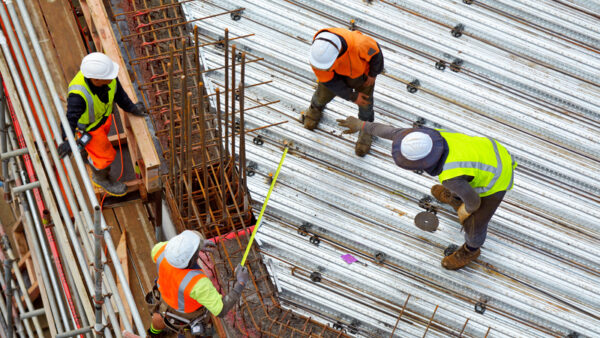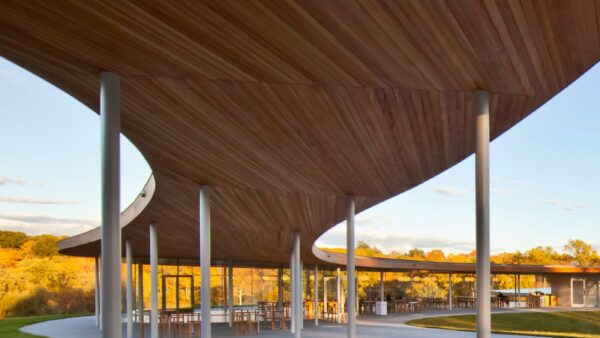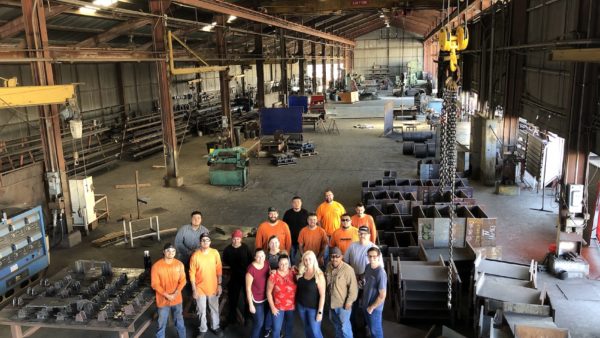
Contrary to common belief, it’s a big oversimplification to say “material X is more sustainable than material Y”, our research suggests.
It was conducted using a state-of-the-art, AI-powered conceptual design tool I and my team developed to enhance precision and foster transparency in sustainable structural design.
Our goal is to help architects and engineers make more informed decisions early in the design process.
The fact is, sustainability outcomes depend heavily on factors like building geometry, supplier location, and reclaimed material content.
For instance, shorter-span options, where there is less distance between the columns in the structural frame of a building, showed reductions of up to 40% in costs and 35% in embodied carbon across various cases.
The embodied carbon of reinforced concrete is more sensitive to changes in span length than steel. Longer spans in reinforced concrete structures cause embodied carbon increases of up to 52%, compared to steel structures, which showed variations up to 39%.
That means reducing the span length in reinforced concrete structures could cut more embodied carbon than reducing the span length in steel structures.
In terms of cost, mass timber is affected more (up to 55%) by increasing span length, with respect to steel (variations up to 24%) and reinforced concrete (variations up to 19%).
Buildings with bigger horizontal footprints (building area) had lower embodied carbon (ranging from 19% to 26% less) than tall buildings, owing to the reduced mass of foundations, beams, columns, and lateral systems.
Taller buildings enclosing the same area as wide buildings put more stress on their structural elements, requiring more mass in them.
Reused steel – as distinct from recycled steel, which is melted down or otherwise reprocessed – emerged as a superior choice, outperforming even wood in sustainability metrics.
Reused steel was shown to be:
- 14% lower in embodied carbon than structures using recycled steel;
- 43% lower than those using typical steel;
- 25% lower than those using mass timber, when considering carbon sequestration;
- 74% lower than those using mass timber without accounting for carbon sequestration;
- 32% lower than those using the most sustainable concrete option.
The study highlighted that variations in suppliers’ manufacturing emissions and their locations can significantly alter embodied carbon calculations, with differences ranging up to 82%.
If a project in New York gets its steel from that state, the embodied carbon is lower than if the steel comes from China. Shipping emissions means the longer the distance the material travels, the bigger its carbon footprint.
The research also warns against the reliance on single figures for embodied carbon during the early design phases, proposing instead a spectrum of embodied carbon values with a median footprint. This approach provides a more accurate representation of a material’s sustainability.
The study’s sensitivity analysis demonstrates that there is no one-size-fits-all solution. Sustainable construction requires a balance between cost, environmental impact, and structural requirements, as well as an understanding that embodied carbon varies widely across different building configurations.
The research demonstrates that architects and engineers can significantly lower the embodied carbon in structural systems through strategic material selection and design decisions at the conceptual stage.
It challenges the prevailing mindset in the construction sector, underscoring that sustainable outcomes are not solely dependent on the choice of materials but are intricately linked to the geometry of the building and other factors mentioned above.
- Alper Kanyilmaz is assistant professor in the Department of Architecture, Built Environment and Construction Engineering at the Politecnico di Milano, Italy. His team’s research on this topic is published in the journal, Structures. He is also an expert advisor for the European Commission Technical group, “Steel Applications for New Markets” (Mandate 2023-2028, B.1 – Future Low Emission Industries).
Comments
Comments are closed.











Doesn’t appear that you answered any questions. Steel and concrete are much worse than timber no matter how you slice it.